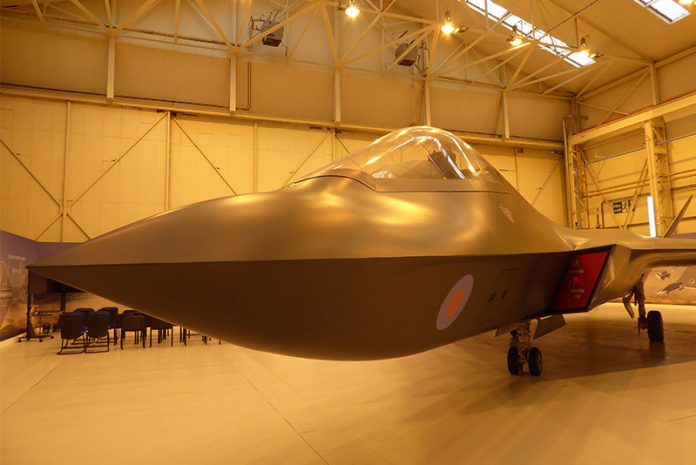The three-year, $519 million (£425m) BAE Systems-led Project Centurion, has re-equipped the RAF’s Tranche 2 Typhoon fleet with MBDA’s Storm Shadow deep strike cruise missile, Meteor air-to-air missile and Brimstone precision attack missile, for operations into the 2040s.
The next phase of the Typhoon enhancement programme is the delivery of an enhanced version of the Captor-E active electronically scanned array (AESA) radar around 2024. Clive Marrison, BAE Systems’ industry requirements director for Team Tempest, said the advanced Mk2 iteration of Captor-E radar, which will feature new hardware in the design and testing stage with Leonardo, is likely to form the baseline of AESA radar technology for Tempest.
BAE Systems is also developing ‘Gladiator’, a new Defence Operational Training Capability (DOTC) simulation that will enable multiple pilots to be immersed in the same virtual environment. The company’s focus is on the cost and security of synthetic training that will enable investment in Tempest.
Senior systems engineer Suzy Broadbent is using gaming technology in designing the future cockpit for Tempest that will possibly have no instrument displays. All the controls and data will be on the pilot’s helmet display, and with the use of Haptic technology, also known as kinaesthetic communication or 3-D touch, that can create an experience of touch by applying forces, vibrations, or motions to the user. Tactical Haptics builds on VR games that use a novel form of touch feedback, bringing new levels of realism to virtual reality. Eye trackers and ECG monitoring are being trialed in light aircraft, while the latest generation helmet, the full-colour Striker II digital helmet-mounted display, is under development by BAE Systems.
Two full scale Tempest mock-ups have been produced by BAE Systems and a Tempest demonstrator is being built at Warton using the latest production technologies including 3-D printing and the integration of battery cells into composite materials, according to Andy Schofield, director of Manufacturing and Materials. For Tempest, the aim is to reduce lead time and waste, as well as halving the a time to market compared with current manufacturing.
by David Oliver













